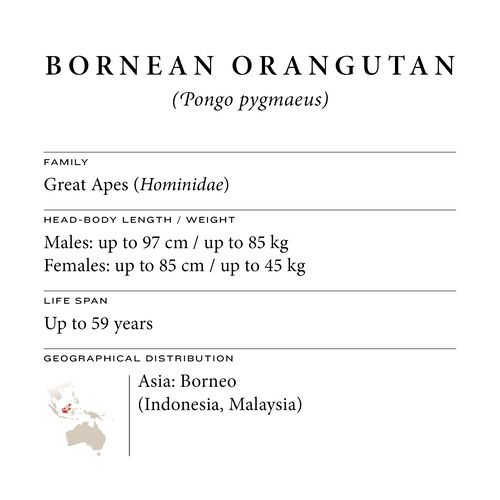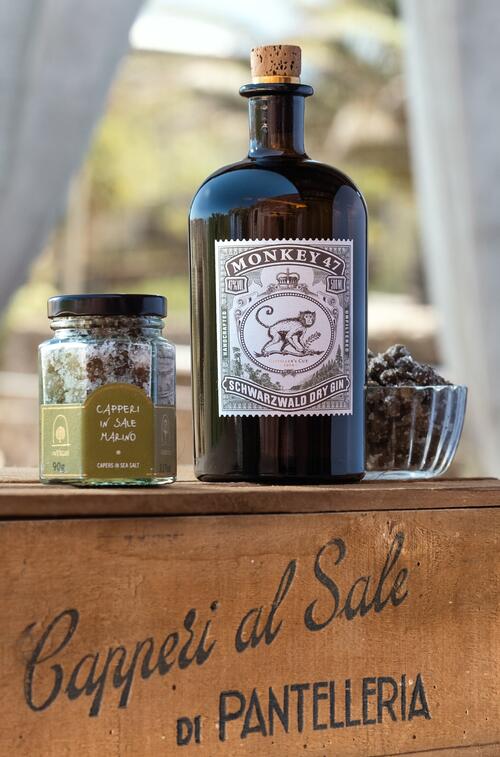Bornean Orangutan
Pongo pygmaeus

HABITAT
Bornean Orangutans inhabit lowland rain forests, riparian, freshwater swamp, peat-swamp and dipterocarp forests, as well as secondary forests and degraded forests at elevations up to 500 metres above sea level; in some cases, montane forests at up to 1,500 metres above sea level.
BEHAVIOUR
Orangutans live more or less solitary. Dominant “flanged” males – meaning those with prominent cheek pads – typically preside over a given territory. Other males are subordinate and less stationary. Bornean Orangutans mark their territory by regularly emitting what are known as “long calls”. Males and females interact solely for mating purposes and spend only a few days together. As a diurnal species, these Orangutans spend most of their time in trees and are rarely on the ground for long. Every evening, they build themselves new sleeping nests among the branches.
NUTRITION
Bornean Orangutans eat plants almost exclusively and prefer fruits most of all. Along with seeds, herbs, roots, leaves, flowers, inner tree bark, and soil, they snack on ants, termites, and caterpillars on a regular basis.
REPRODUCTION
When it comes to finding a mate, it’s primarily the females that do the choosing. Following a gestation period of eight to nine months, they typically give birth to a single infant. Young Orangutans are nursed for up to four years.
STATUS
IUCN RED LIST
Critically endangered
POPULATION
Between 55,000 and 105,000
TREND
The exact number of Orangutans on the island of Borneo is unknown. While records indicate that there were around 288,500 in 1973, that figure is expected to fall to 47,000 by 2025.
THREATS
Major threats to Bornean Orangutans are habitat destruction, human-wildlife conflict and poaching. Adult Orangutans are killed for their meat, and their young are often sold as exotic pets. In addition, forest fires and the consequences of global warming are putting these primates at risk. Like other Great Apes, Orangutans have a very limited ability to compensate for declines in their numbers. On average, a female gives birth to only 4 – 5 young during her lifetime.
CONSERVATION
WHAT WWF IS DOING TO PROTECT THE SPECIES
– Conservation and restoration of forest corridors between national parks for migration
– Development of approaches to reducing conflicts between Orangutans and peasant farmers
– Development of good management practices with companies to protect Orangutan populations on their land
– Education and awareness raising with local communities and in schools with regard to Orangutans
– Research on Orangutans, their habitat, and corresponding threats
Stay tuned. We are going to reveal more in the next couple of days! Sign up for our Monkey News here!





















